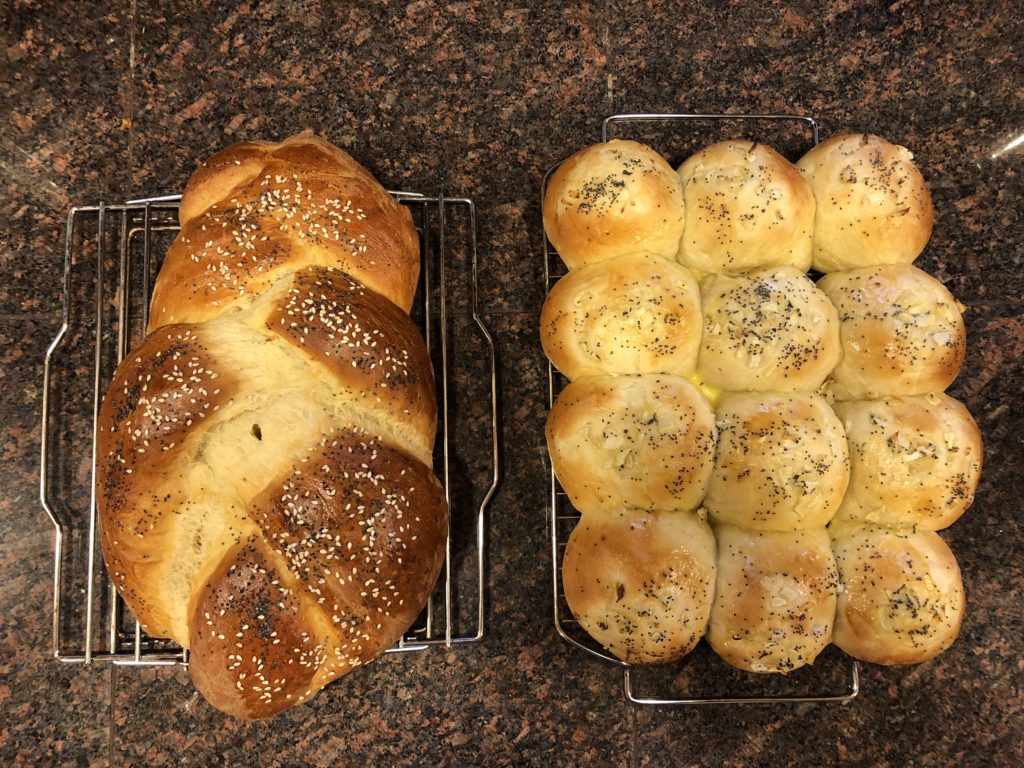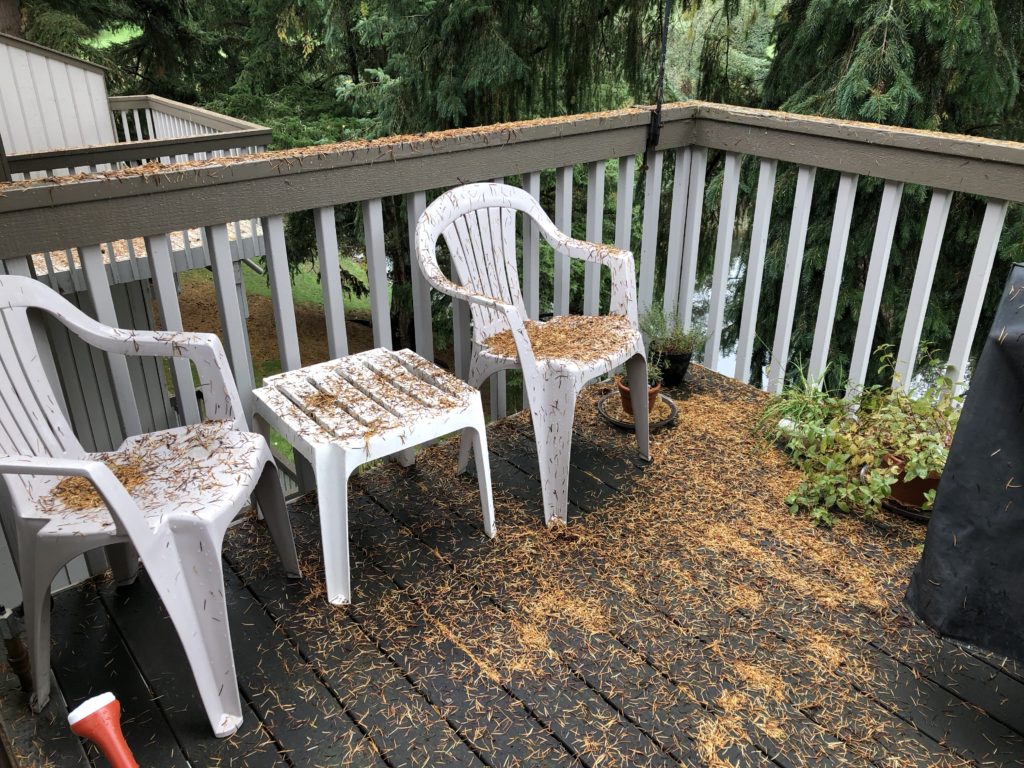The skies, actually. Edible Thoughts is heading east. First stop: Hannibal, with a side trip to Ithaca. We then fly to Paris and grab a train to Lyon for the Fête des Lumières (Festival of Lights). Then we go to Colmar for a couple of days before finishing up with a week in Paris. Keep checking for updates on our escapades.
Permanent link to this article: http://ediblethoughts.com/2017/11/28/hitting-the-road/
Nov 25
Now Will We Pay Attention?
The current sexual harassment and assault claims show that predators can be found in all walks of life and of all political persuasions. We’ve all seen people we respected taken down by their behavior. Will the victims finally get the attention and support they need after their ordeals?
Will we pay attention and stop blaming victims? Consider the women of the US Gymnastics team. It took years to get justice against the team doctor who’d molested so many of them.
Will we pay attention to women at the lower end of the socioeconomic scale, who are most prone to sexual harassment? Here’s a link to a recent article from the Yakima Herald. Women who work in agriculture, food processing, housekeeping, and restaurants are harassed at a higher rate than women in professional or managerial roles. In addition, they’re forced into silence lest they lose their jobs.
Will we pay attention to other issues of harassment? These may be hostile work environments (e.g., “tech bros”) or acts of disrespect that border on assault. One of the regular swimmers at my pool was grabbed by the ankles and pulled backwards by a man who thought she shouldn’t swim ahead of him in the fast lane. She’s one of the fastest swimmers in the early morning session, male or female, and never got pushback for her lane choice until this man showed up. At first the Parks and Recreation management was skeptical, but the episode was corroborated by the lifeguard on duty.
Will we pay attention and realize that these incidents are rarely isolated? There were a few teaching assistants during my undergraduate days who were known serial harassers. One was still on campus ten years after my encounter with him, despite his reputation. He just bounced between departments. Clergy who move (or are moved) from one congregation to another when abuse claims arise are the most egregious examples of this point.
Will we pay attention and advocate for public settlements of harassment claims rather than hush money, non-disclosure agreements, and mandatory arbitration? These strategies have enabled far too many abusers to continue their behavior.
To use a line from Arthur Miller’s Death of a Salesman in a different context: “Attention must be paid.” It’s long overdue.
Permanent link to this article: http://ediblethoughts.com/2017/11/25/now-will-we-pay-attention/
Nov 25
Getting My French On
Next week we leave on our long-awaited vacation. Julian started planning this trip back in February. (Who, us, obsessive-compulsive?) We’ll be in Hannibal for a few days to visit my family, then we’ll fly to France.
To avoid being a magnet for every scammer and pickpocket in Lyon, Colmar, and Paris, my goal is simple: Don’t look so much like an American tourist. (I can’t disguise my nationality once I start speaking, regardless of how many times Mme. Yolande admonished me to pronounce my R’s properly.) Here are my strategies:
- Wear scarves. French women rarely leave their homes without one. They don’t take up much space in the suitcase.
- Wear neutral colors. My hot pink hoodie will stay home.
- Lose the logos. My Cornell pullovers will also stay home.
- Keep the sneaker-wearing to a minimum.
- Bring logo-less mesh or cloth bags to carry baguettes or croissants back to the apartment.
- Ignore American etiquette, numéro un: Cut meat or chicken with my non-dominant hand. (Pas de problème, I do this already.)
- Ignore American etiquette, numéro deux: Set the piece of baguette on the table, not the dinner plate.
- Don’t be seen carrying Rick Steves travel books on the street. Those blue guidebooks instantly target you as a tourist.
I’ll skip the beret and Gauloise cigarettes.
We’ll see how these strategies work with the first test: the Fête des Lumières in Lyon.
Permanent link to this article: http://ediblethoughts.com/2017/11/25/getting-my-french-on/
Nov 23
This Year’s Thanksgiving Contributions
As usual, we’re spending Thanksgiving with some of our Friday Night crew. Our host is doing the turkey and some of the trimmings. I offered to make the traditional cranberry-orange relish, plus some bread for the festivities. After some research in the collection, I settled on a challah recipe that had onion rolls as a variation.
The recipe was straightforward. I put the dough in the refrigerator to rise overnight. It’s a good thing I woke up around 6 this morning – the dough was beginning to crest over the top of the mixing bowl. Had I slept late, I would have had a glutenous mess to clean up. I punched the dough down and let it come to room temperature for a couple of hours. Meanwhile, I had breakfast and made the cranberry-orange relish once the caffeine kicked in.
I divided the dough in half. One portion went to onion rolls, the other was shaped into a traditional challah braid. The latter was sprinkled with sesame and poppy seeds. I was impressed with the “oven spring” of this recipe. The rolls are larger than standard dinner rolls. (Leftover turkey sliders, anyone?) Happy Thanksgiving!

Challah and onion rolls.
Permanent link to this article: http://ediblethoughts.com/2017/11/23/this-years-thanksgiving-contributions/
Nov 18
More Feeding Between the Lines
I’ve posted several times about the assorted food allergies and intolerances in our regular Friday night crew. By now making adjustments to accommodate our friends has become second nature. However, sometimes a recipe can’t be jiggled for everyone. Then we improvise.
The Friday night crew convened last night. Julian offered to make a Peruvian chicken recipe that we’d tried earlier and loved. Try as we might, we couldn’t adapt the recipe for the sauce for our vegetarian friend who also has a pepper intolerance. Julian found a fried tofu with ginger-sesame sauce recipe that showed promise. Rather than frying the tofu myself, I took the easy way out and bought some pre-fried tofu from a local firm. I made the sauce at home with gluten-free soy sauce and assembled the dish at the host house. I warmed up the tofu in a dry skillet; just before serving, I stirred in the sauce. Vegetarians and omnivores alike were pleased with the tofu. Julian made a chicken thigh and a little bit of the cilantro sauce without garlic for our friend, the allium-phobe. (I think the sauce could make shoe leather palatable.) As usual, nobody left hungry.
Permanent link to this article: http://ediblethoughts.com/2017/11/18/more-feeding-between-the-lines/
Nov 18
Nearing the Finish
Last June the Bothell City Council approved negotiations to purchase the Wayne Golf Course from Forterra, a land conservancy. On November 14 the Council was scheduled to vote on the final purchase agreement for the front 9. The back 9 purchase vote will be held on December 12.
The City Council chamber was packed. Before the festivities began, the Council went into closed session for labor negotiations. After about 20 minutes, they returned for the open forum section of the agenda. Surprisingly, most of the speakers were not there for the golf course issue; rather, they spoke against putting a safe drug injection site in Bothell. Many of the speakers on this topic didn’t live in Bothell, which made us wonder whether this was a planned distraction for the Golf Course vote. As it happens, the former mayor (and retiring Council member) is spearheading the drive against the injection site. All of the injection site foes left after the open forum, which increased my suspicion about the timing of this “spontaneous” outpouring of opposition.
After a break and a couple of votes on other issues, the Council finally got around to the motion to buy the front 9. Again we had distraction. A retiring Council member added an amendment that could have been a poison pill, but the Council voted it down. Another retiring Council member prefaced his vote against the purchase by expressing concern for the merchants who have lost business due to last year’s fire and the closure of Main Street while it’s being rebuilt. He thought the city should bail out those merchants, even though such payments are illegal under Washington law. Finally the votes were cast: 5-2 in favor of the purchase. The former mayor and the retiring member who wanted to bail out Main Street merchants were the no votes. Once the tally was announced, the audience erupted in cheers. Let’s hope the back 9 purchase goes a bit more smoothly.

Council members and supporters of the Wayne Golf Course purchase after the vote. Photo courtesy of Julian. The golf course abuts the Sammamish River, which is why the salmon cutouts were used to advocate for the purchase.
Permanent link to this article: http://ediblethoughts.com/2017/11/18/nearing-the-finish/
Nov 05
Cookies
I’m not much for baking cookies. If I do bake cookies, it’s brownies or some other bars. I don’t remember the last time I made drop or shaped cookies – until today.
I found a recipe for double ginger crackles in my file from Fine Cooking magazine and decided it was time to bake some cookies. The recipe was pretty standard; however, the sources of ginger were dried and crystallized. (Luckily, we got fresh supplies of both at Penzey’s yesterday.) I didn’t leave enough space between the cookies on one sheet, so they oozed together. However, they came out to my liking. I’ll see what my coworkers think of them.
Addendum: They were devoured! I took about 30 into the office, and only two were left at the end of the day.
Permanent link to this article: http://ediblethoughts.com/2017/11/05/cookies/
Nov 05
First Snow
Friday morning, a “wintry mix” of rain and snow hit the Seattle area. As the day wore on, it turned into all snow. Luckily, there was no accumulation and the rain resumed in the afternoon. This morning the snow returned and briefly accumulated over the Doug Fir needles on the upper deck. Again, the white stuff stopped falling in the afternoon. As I’ve mentioned before, snowfalls send folks hereabouts into a tizzy. My mother and sister back in the Snow Belt got a kick out of the fact that we got snow before they did.
Permanent link to this article: http://ediblethoughts.com/2017/11/05/first-snow/
Nov 05
The Falling…Needles
One disadvantage of living in the Evergreen State is the damn evergreen needles. The slightest wind sends a fine flurry of them to the ground. A stiff wind sends a blizzard of needles. The needles get tracked into the house and ground into the carpet, and are a bear to remove. In theory, the only conifer that loses all its needles in the fall is the larch, native to the Cascade Mountains and a punch line in several Monty Python skits. In practice, the other species can give the larch some competition. We have a big honking Douglas fir just off the decks of Casa Sammamish. This is what the upper deck looked like yesterday. Even more came down in the last day.

Julian’s comment was, “At least we don’t live in Arizona, the Nevergreen State.”
Permanent link to this article: http://ediblethoughts.com/2017/11/05/the-falling-needles/
Oct 29
Another Beverage Boondoggle Bites the Dust
Apparently the Teamosa (see prior post, Yet Another Beverage Boondoggle) has met the fate of the Juicero. Who put up the capital for this product? Obviously nobody who drinks tea.
Permanent link to this article: http://ediblethoughts.com/2017/10/29/another-beverage-boondoggle-bites-the-dust/

Recent Comments